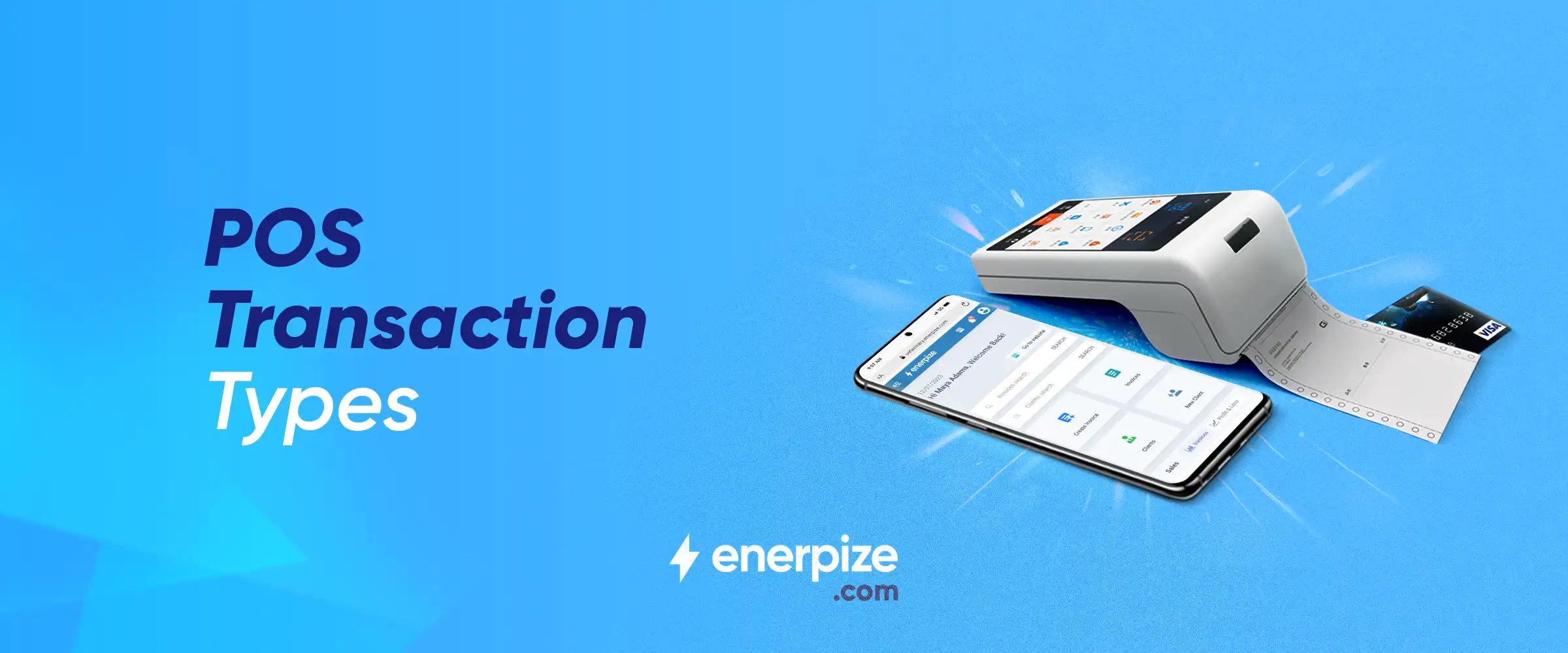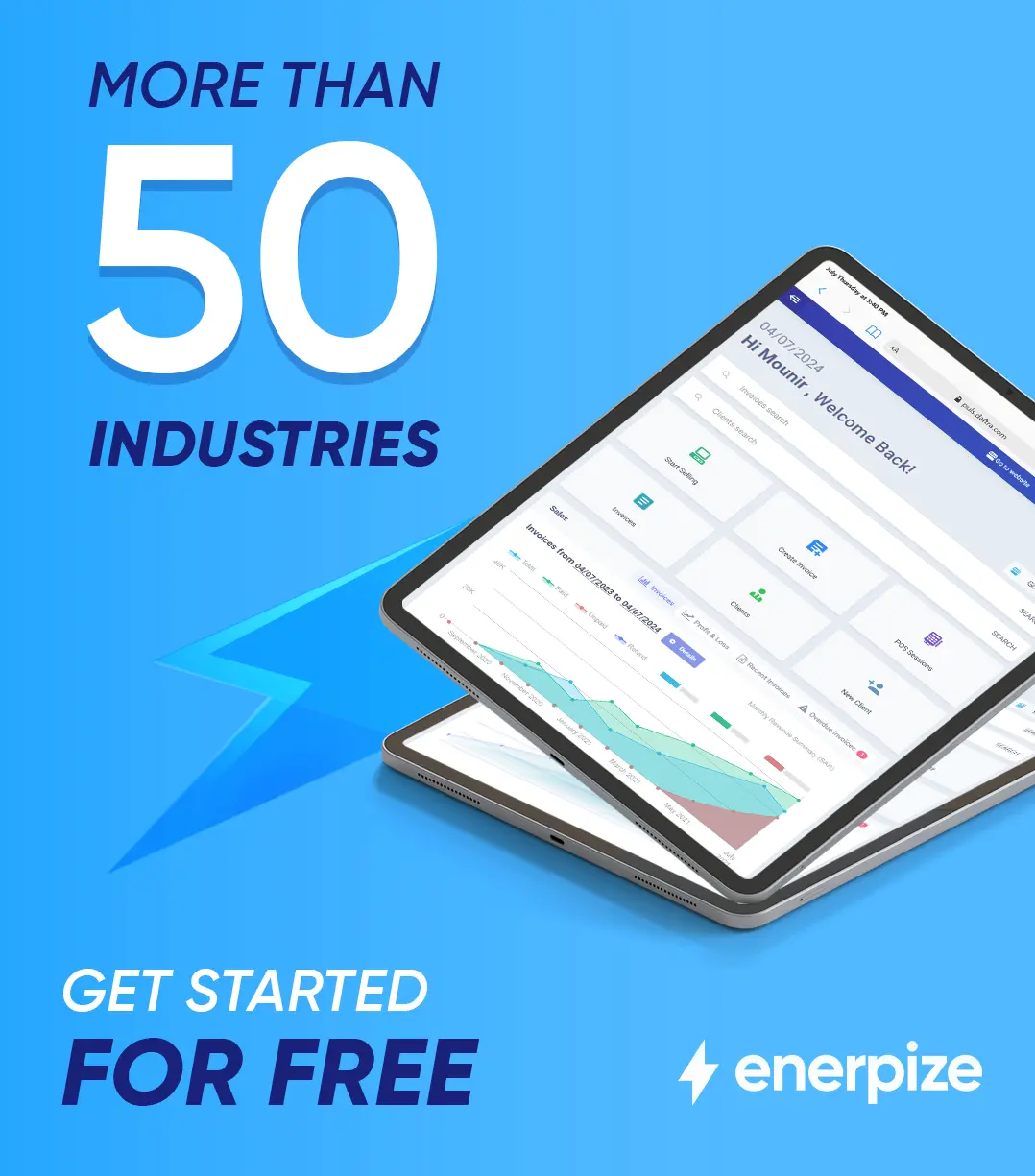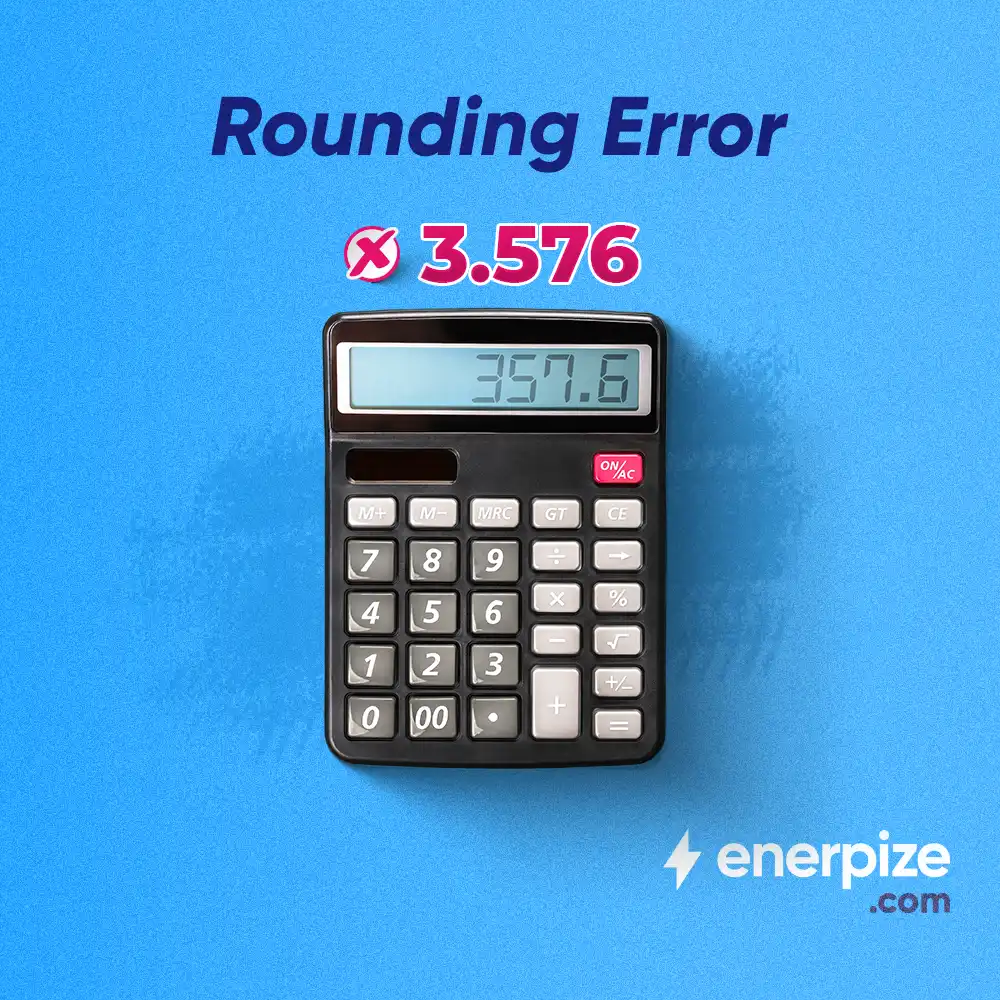Author : Enerpize Team
POS Transaction Types: Explanation With Examples

POS transactions can be made using various payment methods, such as credit/debit cards, cash, or payment gateways (online). But just as POS payments come in different forms, so do transaction type POS. As POS systems have become a standard, understanding transaction type pos meaning is critical so businesses maximize ROIs in POS adoption and customers are better protected and informed about how POS transactions generally work.
The edge POS systems give to businesses is now undisputed. POS systems are not just assets enterprises buy, maintain, and replenish but are “partners” in business success. So, if you are a business owner or executive manager considering investing in a superior POS system or already have one, read on to learn more about POS transaction types, details, and examples.
Key Takeaways
- POS transactions happen through different methods like cards, cash, digital wallets, and online platforms. Understanding each method helps businesses improve checkout flow and customer satisfaction.
- Card payments are quick and common, where customers swipe or tap to complete transactions instantly. However, they can occasionally fail due to issues like low balances.
- Cash payments remain popular, especially in areas with limited digital access. They’re straightforward and reliable, involving manual entry and giving change when needed.
- Digital wallets like Apple Pay and Google Pay offer fast, contactless payments using smart devices. They're linked to cards or bank accounts and favored for ease and speed.
- Online POS transactions take place through websites or apps using cards or e-wallets. They’re convenient but must be secured to avoid fraud and ensure successful payments.
- POS systems also support refunds and returns, allowing reversed payments for canceled services or returned items. A reliable POS setup makes this process quick and accurate.
1. Method-Based Transactions
Credit/Debit Card
Using credit or debit cards to pay for purchases made at a POS checkout point is standard. Millions of customers flock to retail stores and elsewhere to purchase and pay at designated checkout areas.
The payment process follows a ubiquitous procedure countless customers experience every day:
- The customer arrives at a checkout point and is ready to pay
- The customer swipes/taps/inserts their credit/debit card at the POS device and enters their PIN when prompted (or in some cases, the Register Associate does that for customers)
- The POS reader authenticates card information
- In case of approval, the payment is deemed successful
- Two receipt copies are generated: one kept by the store and a second for the customer
There are many cases where a POS transaction is rejected for whatever reason: unavailability of funds, suspicious purchasing behavior, connection problems, and more. In such cases, customers may be asked to re-enter their PIN, use another card, or pay in cash. These are usually inconvenient instances and involve awkward moments and even extended periods of unpleasant shopping experiences. In response, businesses usually pre-empt such instances by ensuring creditworthiness, based on purchase history, is established.
Read Also: Explaining The POS Transaction on Bank Statement
Credit/Debit Card Transaction: Example
An Atlanta, Georgia, 40-something woman walks her dog when the dog accidentally hits a metal trash canister and gets hurt. The woman rushes to a neighborhood veterinarian. After inquiring about her case, the assistant attends to her and proceeds with the check-in process, where the woman swipes her credit card for the service fees.
Cash
Cash is sometimes king. Cash reigns supreme when payments using cards do not work for whatever reason. Using cash to perform a POS transaction is pretty much straightforward as follows:
- The customer hands the required amount for the purchases to the Register Associate
- The Register Associate manually adds the cash to the register
- The Register Associate prints a sales copy for the customer and keeps another for the store
Cash Transaction: Example
In an Iowa-based local convenience store, customers have known Henderson, the store owner, for years, and so have Henderson's customers. Debby, the cash register clerk, accepts cash, welcoming everyone with a smile. The typical clunks her register makes when cash is handed in and payment is registered are familiar to everyone. Once a customer hands cash to Debby, she puts it in the register. In doing so, Debby has already completed a POS cash transaction.
Digital Wallet
Apple Pay, Google Pay, Alipay, and Paypal are all now household digital wallets that millions of customers use worldwide to pay for various purchases. A digital wallet is simply a “connector” payment method between a payer (customer) and a payee (customer). Typically, processing fees are deducted from each transaction.
Digital Wallet Transaction: Example
Elise is a teen influencer who constantly needs easy, quick, and safe payment methods wherever she goes. Having recently moved from Australia to China, Elise has used Alipay—with Apple Pay, Google Pay, and similar U.S.-based digital wallets facing growing restrictions in China—to pay for a branding service she has solicited from a Shanghai-based digital marketing agency.
2. Type-Based Transactions
Online
Only a credit/debit card, a digital wallet, or credit points, for example, can be used to pay for online purchases. Using any digital payment form usually involves:
- Going to a designated “Checkout” page to proceed with payment
- Entering payment details (cardholder’s name, expiry date, and CVV, in case of plastic or virtual cards) or coupon information in case of credit points
- Pressing “Pay” to confirm payment
- Waiting until the payment is verified
- Getting a printable, emailable sales invoice
Occasionally, online transactions may not be accepted, just as in offline settings. The main difference is that online sellers can get more detailed customer information to verify payments from multiple sources, including social media platforms, and get early protection safeguards against POS transaction risks.
Online Transactions: Example
A pensioner, Sally, wants to repurchase Amlodipine (a drug used to treat high blood pressure) after she ran out of it yesterday. Thanks to a tablet her out-of-state son purchased for her last Christmas, she can now make and receive an order the same day. Having logged in to her Amazon account, she reorders Amlodipine and opts for Amazon Prime to get an expedited delivery. Sally chooses her saved credit card details on the checkout page and proceeds to “pay.” She is directed to another page, where she is asked not to refresh or close it. The process of verifying Sally’s transaction details - card details, product (Amlodipine), and quantity (one pack) - lasts for a few moments, and a screen shows that her transaction has been successfully completed.
In-Store
This is a fairly established POS transaction type in which customers pay for purchases using credit/debit cards or cash. For the standard POS payment process offline, check the “POS Transaction Type: Using Card” and “POS Transaction Type: Using Cash” sections.
In-Store Transactions: Example
A stockbroker, Dan, is having a break and wants to get his caffeine from Starbucks. Dan heads to a nearby Starbucks, gets in, and asks for a black coffee, filtered, venti. The barista hands him a POS device to swipe his card, which he does. The POS transaction details (order name and type, date, Dan’s name as shown on the card, card expiry date, CVV, etc.) are verified. By matching Dan’s card information details against the existing nationwide card network, the POS displays “Approved,” and two receipts are generated: a receipt of payment for Dan and a second sales receipt for Starbucks.

3. Industry-Specific Transactions
Travel
This is a POS-based, industry-specific transaction where customers pay for travel services, including tickets, accommodation, F&B services, and everything in between.
Travel Transactions: Example
A frequent flier walks into a brick-and-mortar travel agency and explains his travel plans and routes. Once everything is cleared out with the travel agent, he is handed a POS device to pay for a Miami, FL- Los Angeles, CA roundtrip ticket.
Sports
This is a POS-based, industry-specific transaction in which customers pay for products or services provided by sports agencies, sports management entities, and others.
Sports Transactions: Example
A young Milwaukee-resident family of four is now in New York to enjoy a Yankees game. All set after arriving at the stadium, Ron, the father, pays for four tickets at a designated self-help terminal to get in. The payment is verified, and four paper tickets are printed, including all relevant information: ticket number, purchase date, seat number, amount, etc.
4. Return & Refund Transactions
This is a POS transaction type where a sale has already been made, but the customer chooses to return the product or service for whatever reason. In such cases, sellers usually have channels to return those unwanted products or services. The return or refund transaction is sometimes called “reverse payment.”
Return Policies
Typically, sellers may have a designated section for “Returns” in brick-and-mortar stores so customers can conveniently return unwanted items. Or, when sales are made online, customers are directed to designated pages to request refunds. Generally, sellers better have a formal refund or return policy to garner a straightforward and speedy return process and, more importantly, customer satisfaction.
Return & Refund Transactions: Example
A customer is dissatisfied with a recent flip-flop purchase she made. After checking the retailer’s return policy, she finds she is eligible for a full refund. At the store, she explains herself, and the assistant approves the return of her flip-flop and scanned the customer’s receipt on an in-store POS. The transaction is now reversed, and the customer should receive a full refund on her card within a period determined by the policies of her issuing bank.
Read Also: How to Track POS Transactions: The Complete Guide
Streamline POS Transactions With Enerpize
With so many options, businesses may need help determining which POS system to use.
Opting for a conventional POS system may not be a good option, however cost-effective since conventional systems are not usually integrated into other systems already in place.
Meanwhile, opting for more sophisticated POS systems, however effective, comes at a staggering cost that many small businesses cannot just afford.

The balance between cost-effectiveness, system superiority, business compatibility, scalability, and more factors is hard to come by. This is where Enerpize's online POS software comes in. With affordability and technical excellence front and center, Enerpize is a go-to, end-to-end ERP solution for businesses big and small to:
- Manage payment in multiple currencies
- Provide payment conveniences to customers by diversifying options: in full, by installment, or hybrid
- Generate templatized, printable, and shared invoices
- Automate tax calculation according to each jurisdiction’s laws and regulations
- Customize product prices dynamically in response to evolving situations
- Manage cash flows per shift, volumes, or staff
- Manage inventory end-to-end
- Generate customizable sales reports for more enhanced insights
- Create price groups per vendor or price classes
And more.
Take no chances with your POS transactions.
Try us out and leave behind all your POS concerns so you can focus on your business.
Final Thoughts
POS systems are here to stay. Long established as a business standard, more refinements are introduced to make POS transactions smoother for sellers and customers.
There are too many examples of POS transactions to count. Just look around, and you will see millions of POS transactions everywhere: in retail stores, schools, courts, buses, planes, hotels, etc. They are just so ubiquitous.
As you navigate your way to your perfect POS system, whether you are a business owner or executive manager, ensure that your chosen one best fits your needs and culture.
At Enerpize, we take every business and culture seriously. Go above and beyond, and make no mistake when choosing your POS partner for success.
Managing POS transaction is easy with Enerpize.
Try our POS module to manage your transactions.








